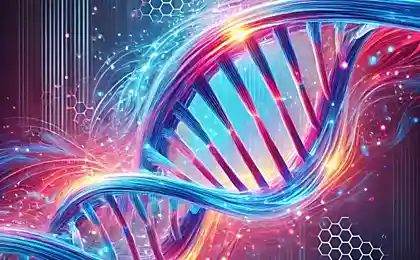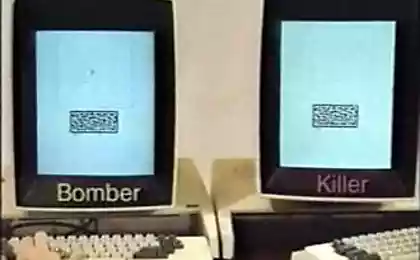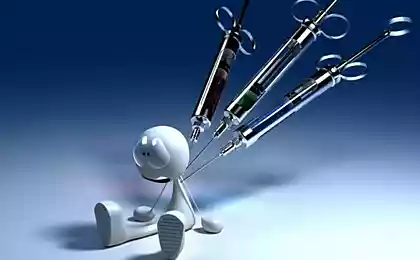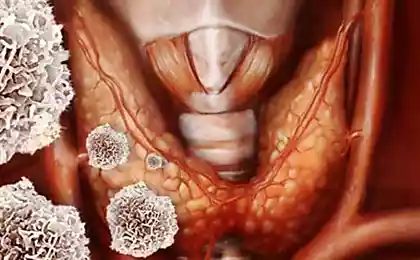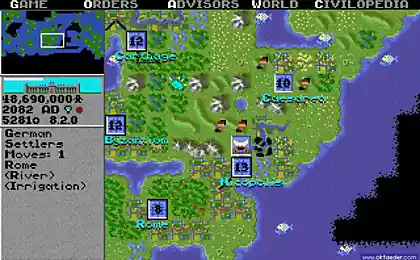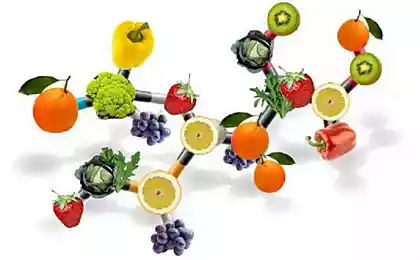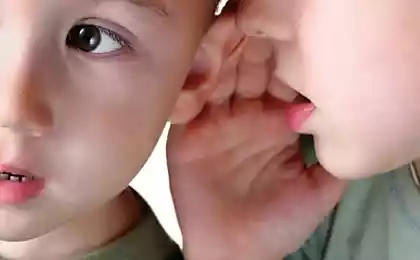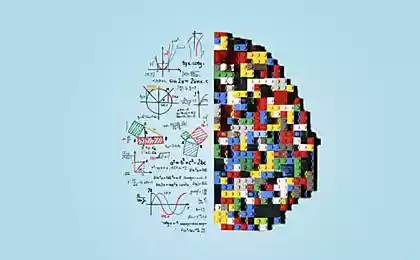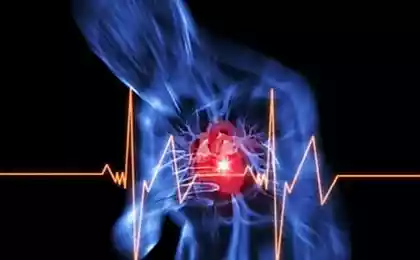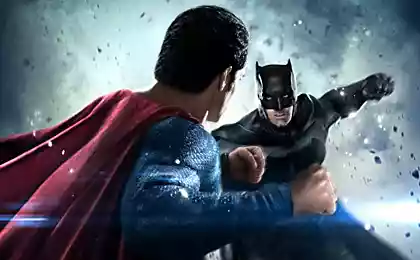440
Computer-aided diagnosis of rare genetic diseases in family photos
Computer analysis of photographs will help doctors to diagnose the disease of a child with a rare genetic disorder, say researchers from the University of Oxford (UK). Researchers have invented a computer program that recognizes facial features in photos, and then looking for similarity in the facial structure for various diseases such as down syndrome, syndrome Angelman or syndrome Hutchinson-Guildford, and provides possible matches according to their probability.
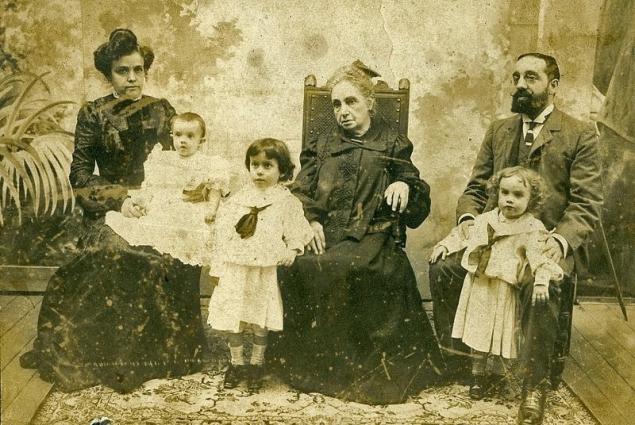
With the latest technology in computer visual perception and machine learning, the algorithm gradually realizes what facial features to pay special attention, and that in the growing database of photographs of people with a particular diagnosis can be ignored.
The study was published in the journal eLife. It was funded by the medical research Council, the British Fund Wellcome Trust, National Institute for research in the field of health Oxford biomedical research centre and the European research Council.
While each individual genetic disorder is rare, it is believed that collectively, these diseases affect 1 in 17 people. Among them, only a third may have symptoms that reduce quality of life. However, most people do not undergo genetic diagnosis.
"Diagnosis of rare genetic diseases is a big step. Thus, it is possible to provide parents with some certainty and to advise on genetic risks, or about the likelihood of transmission of the disease. Diagnosis may also improve understanding of how it may progress the disease, or show which symptoms are caused by genetic disorders, and some other causes that can be cured," says lead research Dr. Christopher Mellecker (Christoffer Nellaker) of the Department of Functional genomics, Oxford University.
A team of researchers from the University of Oxford, including the first author's PhD Quentin ferry (Quentin Ferry and Professor Andrew Zisserman (Andrew Zisserman) from the Department of Technical Sciences, supplemented the knowledge about computer recognition and machine learning.
Professor Zisserman says: "It's great to see such an inventive and beneficial use of modern methods of pattern recognition".
The identification of suspicion for the development of disorders, usually requires clinical geneticists to come to a conclusion based on facial features, as well as subsequent testing and personal experience. It is believed that 30-40% of rare genetic disorders lead to changes in facial features and skull. Perhaps this is due to the fact that many genes involved in the development of the face and skull during growth of the child in the womb.
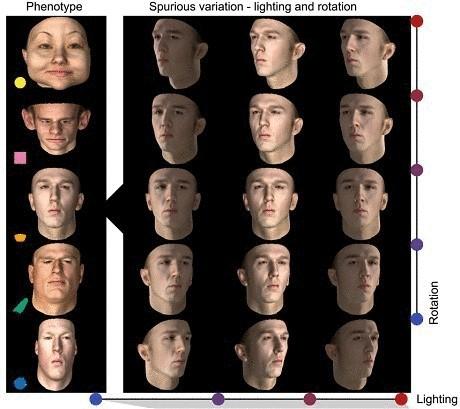
The researchers set out to teach a computer to objectively carry out some assessments.
They have developed a program similar to Google Picasa and other software for photos, which recognizes faces in everyday pictures. The program takes into account lighting, image quality, background, pose, facial expressions and distinctive features. It creates a description of the face structure by identifying corners of eyes, nose, mouth and other features, and compares them with the already viewed pictures that are stored in the database.
The algorithm developed by the researchers automatically groups patients with similar diseases.
Computer algorithm suggests a better diagnosis from the picture in that case, if he has studied many pictures of other people with any syndrome.
The patients are grouped, even if they have no documented analysis that would potentially help in the identification of very rare genetic disorders.
"In the future doctors from anywhere in the world, will be able to skip the picture of the patient through the program and find out which genetic disorder he may have. This objective approach will help narrow down possible diagnoses, will facilitate comparison and will allow doctors to more accurately diagnose patients," says Dr. Mellecker.
Yegor Yakovlev On the materials of Medical Express.
Source: nauka21vek.ru

With the latest technology in computer visual perception and machine learning, the algorithm gradually realizes what facial features to pay special attention, and that in the growing database of photographs of people with a particular diagnosis can be ignored.
The study was published in the journal eLife. It was funded by the medical research Council, the British Fund Wellcome Trust, National Institute for research in the field of health Oxford biomedical research centre and the European research Council.
While each individual genetic disorder is rare, it is believed that collectively, these diseases affect 1 in 17 people. Among them, only a third may have symptoms that reduce quality of life. However, most people do not undergo genetic diagnosis.
"Diagnosis of rare genetic diseases is a big step. Thus, it is possible to provide parents with some certainty and to advise on genetic risks, or about the likelihood of transmission of the disease. Diagnosis may also improve understanding of how it may progress the disease, or show which symptoms are caused by genetic disorders, and some other causes that can be cured," says lead research Dr. Christopher Mellecker (Christoffer Nellaker) of the Department of Functional genomics, Oxford University.
A team of researchers from the University of Oxford, including the first author's PhD Quentin ferry (Quentin Ferry and Professor Andrew Zisserman (Andrew Zisserman) from the Department of Technical Sciences, supplemented the knowledge about computer recognition and machine learning.
Professor Zisserman says: "It's great to see such an inventive and beneficial use of modern methods of pattern recognition".
The identification of suspicion for the development of disorders, usually requires clinical geneticists to come to a conclusion based on facial features, as well as subsequent testing and personal experience. It is believed that 30-40% of rare genetic disorders lead to changes in facial features and skull. Perhaps this is due to the fact that many genes involved in the development of the face and skull during growth of the child in the womb.

The researchers set out to teach a computer to objectively carry out some assessments.
They have developed a program similar to Google Picasa and other software for photos, which recognizes faces in everyday pictures. The program takes into account lighting, image quality, background, pose, facial expressions and distinctive features. It creates a description of the face structure by identifying corners of eyes, nose, mouth and other features, and compares them with the already viewed pictures that are stored in the database.
The algorithm developed by the researchers automatically groups patients with similar diseases.
Computer algorithm suggests a better diagnosis from the picture in that case, if he has studied many pictures of other people with any syndrome.
The patients are grouped, even if they have no documented analysis that would potentially help in the identification of very rare genetic disorders.
"In the future doctors from anywhere in the world, will be able to skip the picture of the patient through the program and find out which genetic disorder he may have. This objective approach will help narrow down possible diagnoses, will facilitate comparison and will allow doctors to more accurately diagnose patients," says Dr. Mellecker.
Yegor Yakovlev On the materials of Medical Express.
Source: nauka21vek.ru
Star Trek uses a wireless Oculus Rift to visit virtual worlds
Aero-X —individual transport for flight at low altitude

